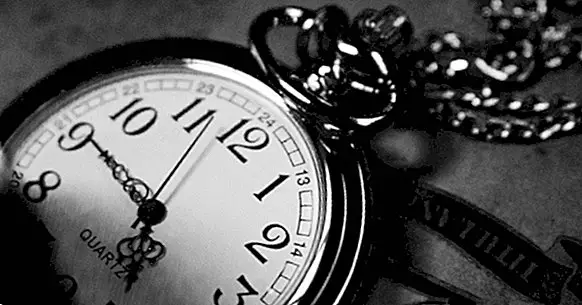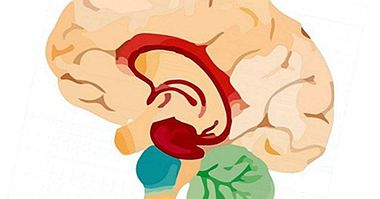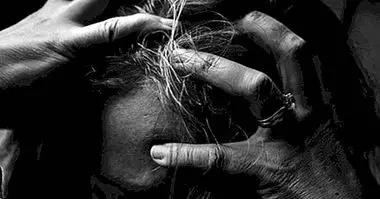Fear of watches (chronometrophobia): causes, symptoms and treatment
Human beings can develop fears towards anything and, sometimes, these fears are irrational and persistent. It is what is known as phobia, a disorder that usually develops as a result of a traumatic experience of the past .
Phobias are of many types. Some of them very strange as we explained in our article "The 15 purest phobias that exist." And is that some phobic disorders can miss many people because of the harmlessness of the feared stimulus. A clear example is chronometrophobia or fear of watches.
Surely many readers ask, "How is it possible that this apparatus so useful and not dangerous cause fear?" In this article we will answer this question and we will delve into the causes, symptoms and treatment of this disorder.
What is chronometrophobia
As we said at the beginning of the article, there are many types of phobias. You can check it in our article "Types of phobias: exploring the disorders of fear".
These irrational fears can be classified into social phobias, agoraphobia or specific or simple phobias. The latter are distinguished from the previous ones because the phobic stimulus is an object, an activity, a situation or an animal. Clown phobia (coulrophobia), dogs (cynophobia) and, of course, the phobia of watches (chronometrophobia) belong to this type of phobias .
Phobias are included within the group of anxiety disorders, so anxiety, in addition to extreme fear, is one of the characteristic symptoms of this disorder. People who suffer from chronometrophobia, in the presence of watches or their imagination, feel extreme fear, anxiety, confusion, the need to avoid the feared stimulus and many other symptoms that cause discomfort.
The relationship of this phobia with the fear of the passage of time or chronophobia
Clocks are objects that tell us the time and that allow us to know the temporary moment in which we are. For the life of the current human being, these devices are very useful.
But some people develop these phobias for different reasons. In some cases, this phobia is associated with chronophobia or fear over time . This disorder is complex, and according to experts, older people and individuals who are in jail experience it more often. In the case of those incarcerated, this disorder is called "neurosis of prisons."
- If you want to delve into this pathology, you can read our article: "Chronophobia (fear of the passage of time): causes, symptoms and treatment"
Causes of the phobia of watches
But the phobia of watches does not only appear as a consequence of chronophobia. The most common cause is as a result of a traumatic experience, usually during childhood . Chronometrophobia is developed by classical conditioning, because it occurs by the association of a stimulus that initially causes a reflex response of fear and another that originally does not cause it. This last stimulus is called a neutral stimulus. After presenting these stimuli together, and fruit of the traumatic experience, the neutral stimulus can elicit a response of fear.
Ivan Pavlov originally investigated this phenomenon; However, the first researcher to develop a phobia in humans was John B. Watson, an American psychologist who conducted a series of studies that are considered unethical today.
- To delve into this topic, you can read our article "Classical conditioning and its most important experiments"
symptom
Now, this phobia also has an effect on the behavior of the subject, which in the presence of watches, tends to avoid them. Other characteristic symptoms, known as physical symptoms, are:
- Accelerated heartbeat.
- Incrise of cardiac frecuency.
- Feeling of shortness of breath and hyperventilation.
- Hypersurbation.
- Dry mouth.
- Intestinal discomfort
- Headache.
- Tension in the muscles.
Treatment
Anxiety disorders are very frequent reasons for consultation in psychology clinics . Among these are phobias, which cause great discomfort. Patients are often aware of the problem they suffer, but fear is an emotion that takes place in the primitive brain and not in the neocortex (rational brain) so phobias do not usually respond to logical arguments. The best way to treat a phobia is through exposure therapy, which belongs to the therapeutic model known as cognitive behavioral therapy (CBT).
CBT is a form of psychotherapy that has given many results, and that includes other useful techniques for the treatment of phobias such as, for example, relaxation techniques, which help the patient to control the symptoms of this pathology.
One of the most used techniques is the systematic desensitization, which includes the two previous ones, and which consists in exposing the patient, gradually, to the phobic stimulus. . This means that, for example, first the patient is exposed to photographs in which watches appear, and then, in the last stages of treatment, to have direct contact with the feared stimulus.
Other types of therapy are being used successfully today. Cognitive therapy based on Mindfulness or acceptance and commitment therapy are some examples. In addition, as we explained in our article "8 apps to treat phobias and fears from your smartphone", new technologies are also at the service of the treatment of phobic disorders.



















